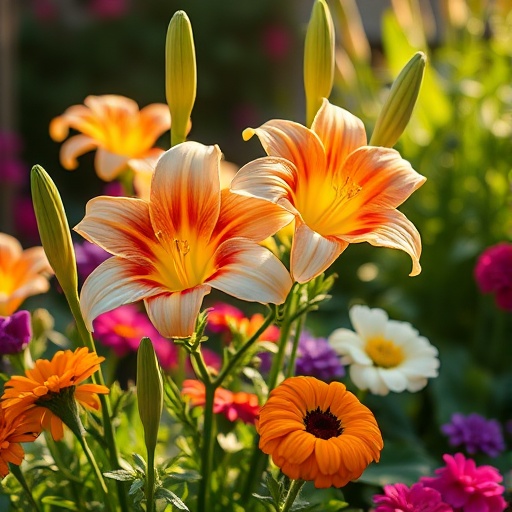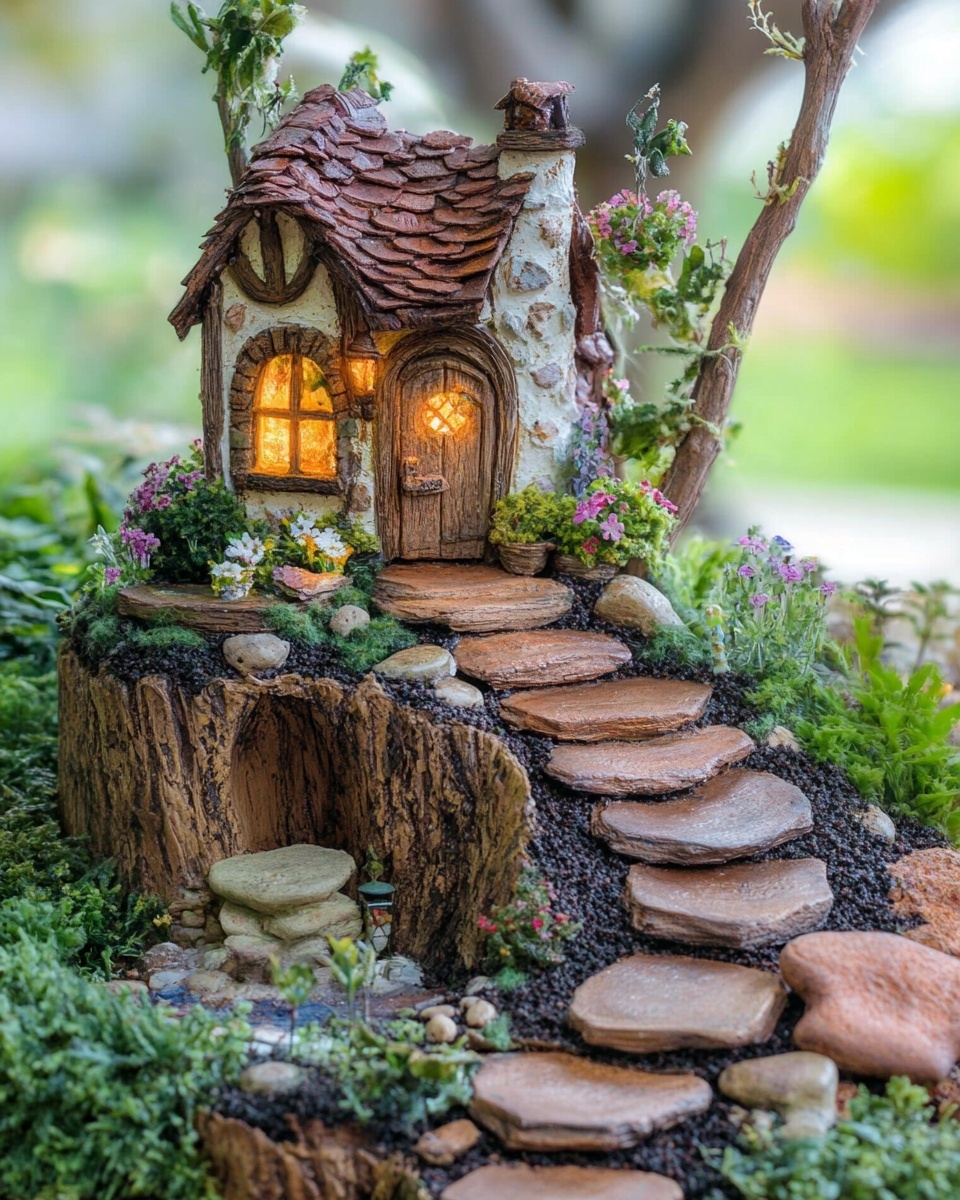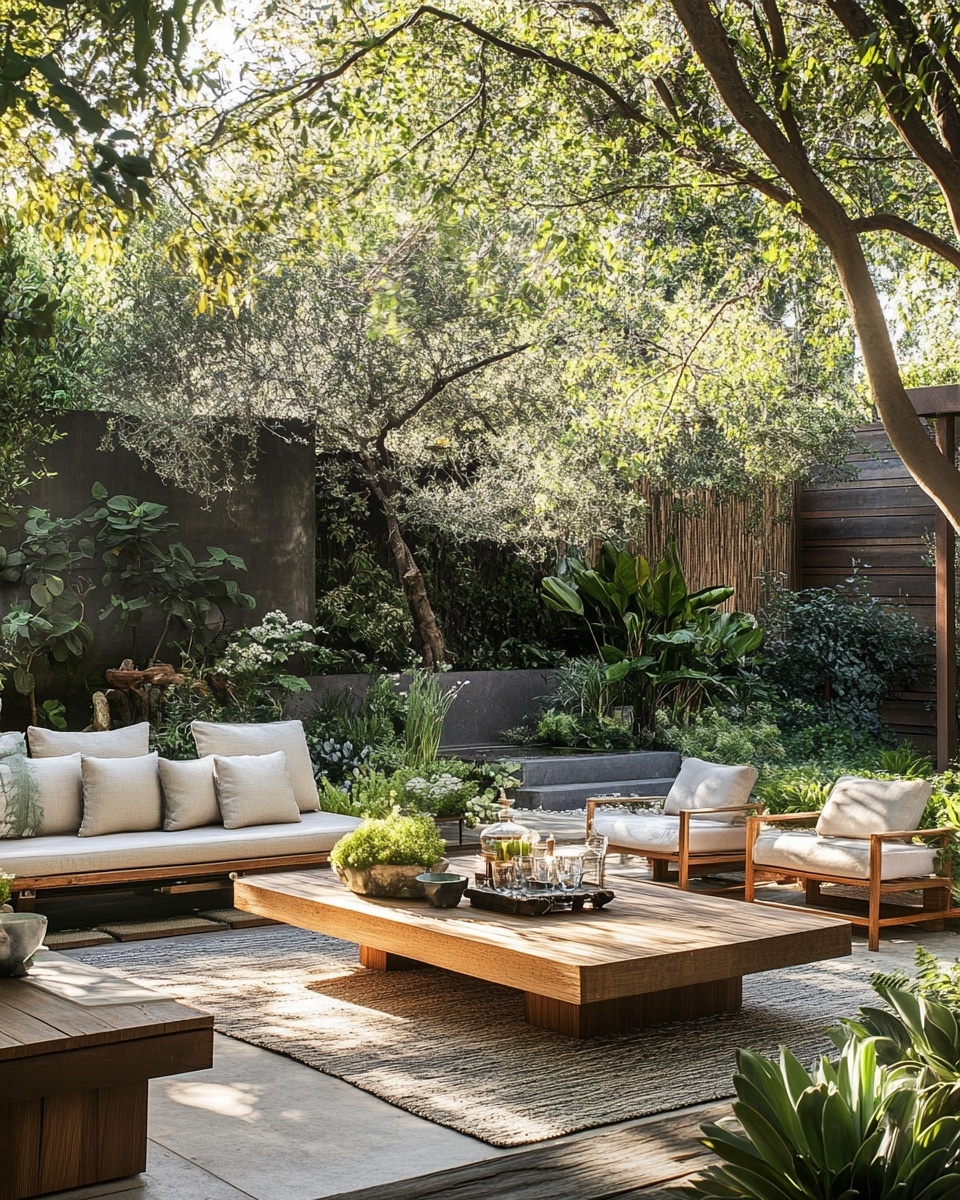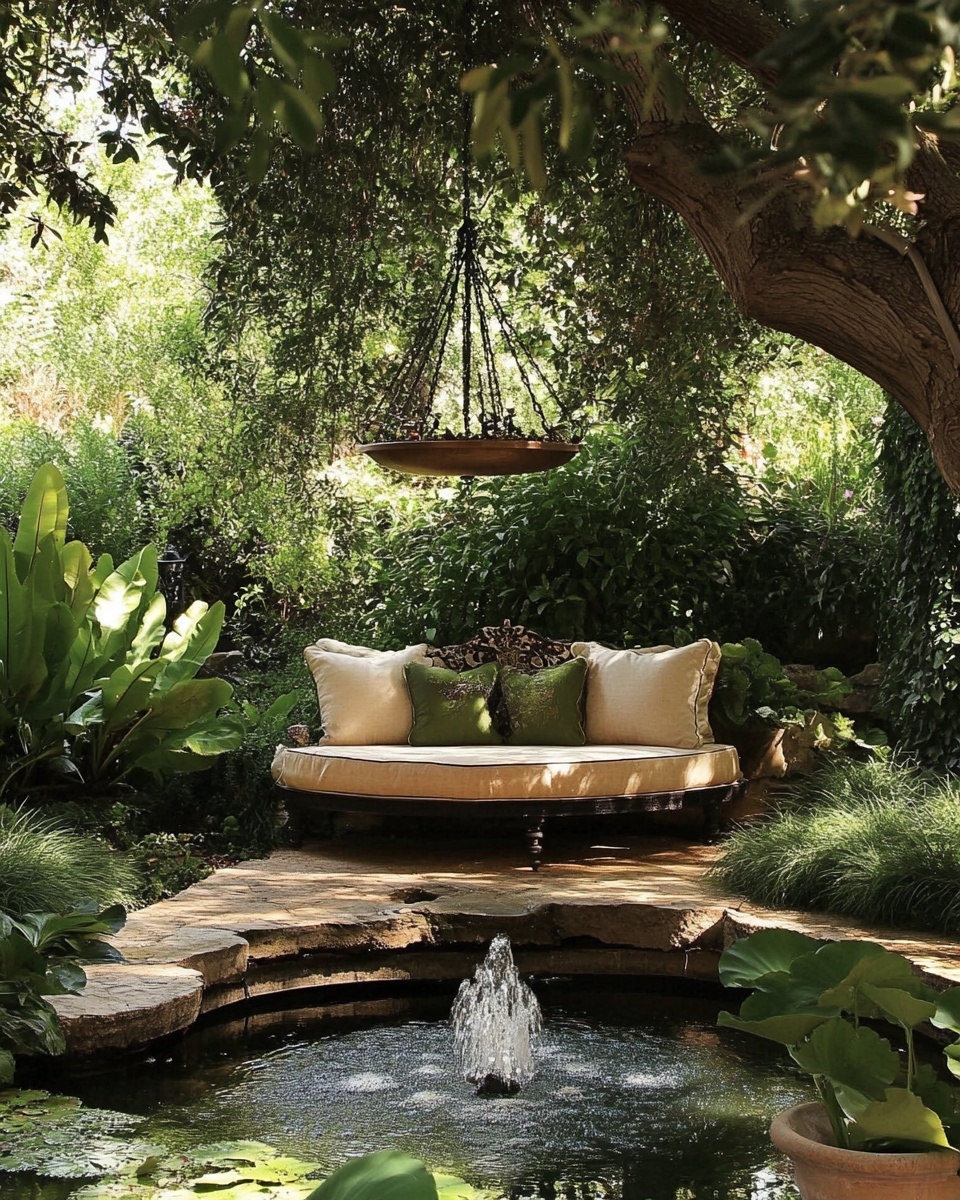Introduction
Did you know that over 40% of aspiring gardeners give up within their first year due to perceived difficulty and time commitment? It's a common misconception that cultivating a vibrant garden demands endless hours and specialized knowledge. But what if you could have a stunning floral display with minimal effort? Imagine a world where your garden thrives with beautiful flowers easy to grow, requiring little more than a loving glance. This guide isn't about wishful thinking; it's about empowering you to create a flourishing, low-maintenance haven, even if your schedule is packed. We'll explore the secrets to establishing an effortless floral paradise, turning your green dreams into a reality without the usual botanical burden.
Tools & Materials Needed
Getting started with a low-maintenance flower garden doesn't require an arsenal of expensive equipment. In fact, many of the essentials you might already have! For our project, here’s what you’ll need:
- Hand Trowel: A sturdy trowel is essential for digging small holes for planting. Eco-friendly alternative: Look for trowels with recycled plastic handles or bamboo grips.
- Gardening Gloves: Protect your hands from dirt, thorns, and potential irritants. Choose a pair that offers good dexterity.
- Small Shovel or Spade: Useful for turning soil, especially if you're preparing a new bed.
- Watering Can or Hose with a Gentle Sprayer: Consistent, gentle watering is key, especially for new plants.
- High-Quality Potting Mix or Garden Soil: Opt for a well-draining, nutrient-rich blend. For container gardening, a good potting mix is crucial. Budget-friendly tip: Many local garden centers offer bulk compost or soil at a lower price per volume.
- Compost or Organic Matter: Incorporating compost improves soil structure, drainage, and nutrient content, reducing the need for chemical fertilizers.
- Mulch: Materials like wood chips, straw, or shredded leaves help retain soil moisture, suppress weeds, and regulate soil temperature.
- Selected Flower Seeds or Starter Plants: This is where the magic begins! We'll focus on flowers easy to grow like Marigolds, Zinnias, and Cosmos. If you're selecting starter plants, choose healthy, compact specimens with no yellowing leaves or signs of pests.
- Optional – Bypass Pruners: For occasional deadheading (removing spent blooms) to encourage more flowering.
- Optional – Small Stakes or Plant Supports: For taller varieties to prevent them from flopping over in windy conditions.
Time & Effort Overview
One of the greatest appeals of cultivating flowers easy to grow is the minimal time investment they demand. Expect to spend approximately 2-3 hours initially for planting a small bed (around 10 sq ft). This initial period covers soil preparation and getting your plants or seeds into the ground.
Compared to more demanding perennials or exotic annuals that often require weekly pest checks, frequent deadheading, and precise fertilization, our chosen varieties generally need 25% less active maintenance once established.
- Planting: 1-2 hours (if starting from seeds, add 15-30 minutes for careful sowing)
- Initial Watering: 15 minutes post-planting
- Weekly Maintenance (once established): 30 minutes – 1 hour (mostly for watering during dry spells and light deadheading). This is significantly less than the 2-3 hours often required for high-maintenance gardens.
- Difficulty Level: Absolutely Beginner. These selections are highly resilient, forgiving of minor neglect, and provide rewarding blooms even for first-time gardeners.
Step-by-Step Gardening Process
Let's get our hands dirty (in a good way!). Follow these simple steps to ensure your low-maintenance garden thrives.
Choosing Your Spot and Preparing the Soil
The right location is half the battle. Select a spot that receives adequate sunlight—most flowers easy to grow prefer at least 6 hours of direct sun daily. Clear the area of any weeds or debris.
Next, loosen the soil to a depth of about 6-8 inches. If your soil is compacted, now is the time to mix in some compost or organic matter. This improves drainage and fertility. Aim for a crumbly texture.
Planting Your Seeds or Starter Plants
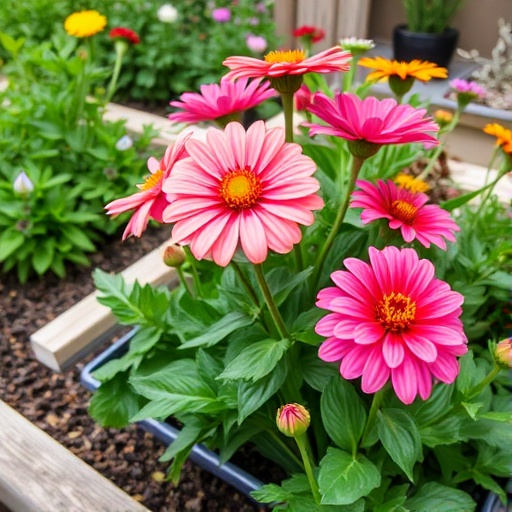
If planting seeds, follow the package instructions for spacing and depth. Typically, you'll plant seeds 2-3 times deeper than their size. Gently cover them with soil.
For starter plants, dig a hole slightly larger than the root ball. Carefully remove the plant from its container, gently tease apart any coiled roots, and place it in the hole. The top of the root ball should be level with the surrounding soil. Fill the hole with soil, gently firming it around the base of the plant. Don’t worry if the plant looks a little shocked at first; it will perk up!
Initial Watering and Mulching
Water thoroughly immediately after planting. This helps settle the soil around the roots and eliminates air pockets. Be gentle to avoid dislodging seeds or small plants.
Once watered, apply a 2-3 inch layer of mulch around your plants, making sure it doesn't touch the stems directly. This is a game-changer for low maintenance, as it helps retain moisture, suppresses weeds, and keeps soil temperatures stable.
Ongoing Care: Watering and Feeding (Less is More!)
For the first few weeks, keep the soil consistently moist but not waterlogged to help young plants establish strong roots. Once established, most flowers easy to grow are quite drought-tolerant. Water deeply when the top inch of soil feels dry to the touch.
When it comes to feeding, thanks to our initial soil preparation with compost, you likely won't need much additional fertilizer. A light application of a balanced, slow-release organic fertilizer once a month during peak growing season is usually sufficient, if desired.
Deadheading for Continued Blooms
While some low-maintenance flowers are "self-cleaning" (meaning spent blooms drop off naturally), many benefit from deadheading. This simply means snipping off faded or dead flowers. It redirects the plant's energy from seed production back into producing more blooms. Here’s how to fix droopy, spent flowers into a vibrant display again!
Growth & Care Tips
Once your beautiful blooms are established, a few simple practices will ensure they continue to flourish.
- Watering Frequency: While establishing, water every 1-2 days, ensuring the soil remains moist. After the first 3-4 weeks, reduce watering to 1-2 times per week, or when the top 1-2 inches of soil are dry. Overwatering is a common killer, accounting for 60-70% of plant fatalities in home gardens, so always check soil moisture first! These resilient flowers easy to grow prefer slightly drier conditions over soggy feet.
- Sunlight Exposure: Most of our recommended low-maintenance flowers, such as Marigolds, Zinnias, and Cosmos, thrive in full sun, meaning at least 6-8 hours of direct sunlight daily. Impatiens and Begonias are excellent choices for shadier spots.
- Pruning (Deadheading): Regularly deadhead spent flowers. This not only encourages new blooms but also keeps the plant looking tidy and prevents it from expending energy on seed production. For example, studies show that deadheading Zinnias can increase bloom production by up to 30%.
- Fertilization: With good initial soil preparation, supplemental feeding is minimal. If your plants look sluggish or leaves are pale, a balanced liquid organic fertilizer applied every 4-6 weeks at half strength can provide a boost. Avoid over-fertilizing, which can lead to lush foliage but fewer flowers.
- Pest Prevention: Healthy plants are naturally more resistant to pests. Encourage beneficial insects like ladybugs by avoiding broad-spectrum pesticides. If you spot pests, try natural remedies first, like a strong spray of water or an insecticidal soap solution. Neem oil is also an excellent organic option for managing common garden pests.
Eco-Friendly & Sustainable Alternatives
Gardening responsibly is as rewarding as the blooms themselves. Here are ways to make your low-maintenance garden even greener:
- Composting: Start a compost bin! All your kitchen scraps and garden waste can be turned into nutrient-rich "black gold" for your garden, reducing landfill waste and enriching your soil for free.
- Natural Fertilizers: Beyond your homemade compost, consider using worm castings, bone meal, or seaweed extract. These provide slow-release nutrients without the environmental impact of synthetic fertilizers.
- Water Conservation:
- Rain Barrels: Collect rainwater for irrigation. Your plants will thank you, and your water bill might too!
- Drip Irrigation/Soaker Hoses: These deliver water directly to the plant roots, minimizing evaporation and water runoff. This can reduce water usage by up to 50% compared to overhead sprinklers.
- Mulching: As mentioned, a good layer of mulch drastically reduces water evaporation from the soil surface.
- Alternatives for Small Spaces: Don't have a sprawling garden? No problem! Many flowers easy to grow adapt beautifully to containers.
- Balcony Gardens: Fill pots and window boxes with Marigolds, Petunias, or even dwarf Zinnias.
- Vertical Gardens: Utilize vertical space with wall planters or tiered shelving. This is especially good for creating a vibrant floral display in a compact footprint. For inspiration on maximizing small spaces, check out our guide on creating a vertical balcony herb garden: Vertical Balcony Herb Garden Design Ideas.
Creative Ideas & Uses
Your beautiful low-maintenance flowers aren't just for looking at! Here are some creative ways to enjoy them:
- Decorative Touches:
- Cut Flower Arrangements: Many flowers easy to grow, like Zinnias, Cosmos, and Marigolds, make excellent cut flowers. A simple bouquet from your garden can brighten any room. Consider mixing heights and textures for visual interest.
- Edible Flowers: Certain varieties, like Marigolds (Tagetes tenuifolia, the "lemon gem" variety) and nasturtiums, have edible petals that can add a pop of color and peppery flavor to salads or as a garnish. Always ensure flowers are organically grown and safe to eat.
- Dried Flowers: Some flowers, like Statice or Celosia, dry beautifully and can be used in wreaths, potpourri, or long-lasting arrangements.
- Repurpose Garden Materials: Old tires can be painted and used as raised beds, plastic bottles can be upcycled into self-watering planters, and driftwood can serve as natural garden borders. A quick search on Pinterest will provide endless ideas, like these gardening hacks: https://www.pinterest.com/janatjanay47/
- Combine Plants Aesthetically:
- Color Theory: Plant flowers together that complement each other on the color wheel (e.g., purples and yellows) or create serene monochromatic schemes (e.g., various shades of blue).
- Layered Flower Beds: For a polished look, plant taller varieties at the back of a bed, mid-height plants in the middle, and shorter, sprawling plants along the front edge. This creates depth and ensures all blooms are visible. You can find more detailed tips on this here: Layered Flower Bed Design Tips.
- Attract Pollinators: Design your garden with pollinator-friendly flowers easy to grow like sunflowers, coneflowers, and phlox. This boosts local biodiversity and ensures healthy plant reproduction. Check out our guide on attracting beneficial insects: How to Attract Butterflies and Bees with Flowers.
Common Mistakes to Avoid
Even with flowers easy to grow, a few common pitfalls can hinder success. Being aware of these can save you a lot of headache!
- Overwatering: As mentioned, this is a top culprit. Especially when using new potting mix, it's easy to assume plants need more water than they do. Overwatering causes root rot, depriving roots of oxygen. Studies show overwatering contributes to the demise of over 60% of houseplants and container gardens. Always check soil moisture before watering.
- Poor Drainage: Both garden beds and pots need adequate drainage. If water sits, roots drown. Ensure containers have drainage holes, and amend heavy clay soils with organic matter to improve aeration.
- Ignoring Sunlight Requirements: Placing a sun-loving plant like a Zinnia in a shady corner will result in leggy, weak growth and few flowers. Conversely, placing a shade-lover in full sun can scorch its leaves. Research your plant's needs!
- Planting Too Deep or Too Shallow: This applies especially to seeds and seedlings. Planting too deep can prevent germination or suffocate young roots, while planting too shallow can expose delicate roots to drying out.
- Forgetting to Mulch: Skipping mulch is a missed opportunity for reducing maintenance. Without it, you'll be watering more frequently and battling weeds constantly.
- Over-fertilizing: More isn't always better. Too much fertilizer, especially high-nitrogen formulas, can burn roots, promote leafy growth at the expense of flowers, or lead to nutrient imbalances. Follow package directions carefully or rely on good compost.
- Crowding Plants: While tempting to pack plants in for an instant full look, overcrowding limits air circulation, increases competition for nutrients and water, and makes plants more susceptible to fungal diseases. Allow proper spacing as recommended.
Maintenance & Storage Tips
Ensuring the longevity of your garden and preparing for future seasons is a rewarding part of gardening.
- Long-Term Plant Health:
- Annuals: Most low-maintenance annuals live for one growing season. Enjoy their vibrant display and then compost them at the season's end. Many will self-seed, meaning they'll drop seeds that might sprout next spring, giving you new plants with no effort!
- Perennials: If you choose any low-maintenance perennials (like Coneflowers or Daylilies), a light trim after flowering can encourage a second flush of blooms, and dividing them every few years can rejuvenate their growth.
- Seed Saving: If you planted from open-pollinated seeds (not hybrids), you can collect seeds from your mature plants for next year. Allow the flower heads to dry completely on the plant, then harvest the seeds.
- Seed Storage: Store collected or purchased seeds in a cool, dark, and dry place in airtight containers. An envelope inside a Mason jar with a desiccant packet works wonderfully. Properly stored seeds can remain viable for several years.
- Seasonal Care:
- Spring: As temperatures warm, clear away any winter debris, test your soil, and prepare beds for new planting.
- Summer: Focus on consistent watering during dry spells and deadheading.
- Autumn: Clean up spent annuals, prune back perennials, and apply a fresh layer of mulch to protect the soil over winter.
- Solutions for Common Issues:
- Yellow Leaves: Often a sign of overwatering (lack of oxygen to roots) or nutrient deficiency (especially nitrogen). Check soil moisture first.
- Poor Soil Drainage: For container plants, repot with fresh, well-draining soil and ensure drainage holes are clear. For garden beds, amend with plenty of organic matter to improve structure. Adding gravel to the bottom of pots is a myth; it creates a perched water table, making drainage worse! Instead, use high-quality potting mix throughout.
Conclusion
You’ve now unlocked the secrets to a stunning garden without the stress. By choosing flowers easy to grow, mastering a few simple techniques like proper watering and mulching, and sidestepping common pitfalls, you can cultivate a beautiful, thriving space that perfectly complements your busy lifestyle. Gardening doesn't have to be a chore; it can be a source of immense joy and vibrant beauty with minimal effort. Imagine stepping out each day to a burst of color and fragrance, knowing you created it with grace and ease!
Ready to transform your outdoor space? Grab your trowel, choose your favorite low-maintenance blooms, and start planting today! We'd love to see your progress – share your garden photos with us on social media using #PincraftProGarden. For more inspiration and detailed guidance, explore our other gardening articles and let your green thumb flourish!
FAQ
Q1: What are the absolute best flowers easy to grow for total beginners?
A1: For absolute beginners, Marigolds, Zinnias, Cosmos, and Nasturtiums are fantastic choices. They're incredibly resilient, germinate quickly, and produce abundant blooms with minimal fuss. Petunias and Impatiens are also excellent, especially in hanging baskets or containers.
Q2: How often should I water my low-maintenance flowers?
A2: Generally, water deeply when the top 1-2 inches of soil feel dry to the touch. This could be 1-2 times a week, depending on temperature, humidity, and whether your plants are in pots or in the ground. Overwatering is more detrimental than slight under-watering for many easy-to-grow varieties.
Q3: Do I need to fertilize these easy-to-grow flowers?
A3: If your soil was initially amended with good compost, supplemental fertilization is often unnecessary or minimal. A light application of a balanced organic fertilizer once during the mid-growing season is usually plenty. These flowers easy to grow thrive on healthy soil, not excessive fertilizer.
Q4: My flowers are looking leggy and aren't producing many blooms. What am I doing wrong?
A4: Leggy growth and sparse blooms often point to insufficient sunlight. Most popular easy-to-grow flowers require at least 6-8 hours of direct sun daily. Also, ensure you're deadheading spent blooms, as this encourages the plant to produce more flowers instead of seeds.
Q5: Can I grow these flowers in pots on a balcony?
A5: Absolutely! Many flowers easy to grow like Marigolds, Zinnias (especially dwarf varieties), Petunias, and Impatiens are perfect for containers and thrive on balconies. Just ensure your pots have good drainage holes and you use a high-quality potting mix. If you’re short on space, consider exploring options like those in our guide on Balcony Herb Garden Ideas for Beginners.
Q6: What's the secret to keeping weeds away from my low-maintenance garden?
A6: The best secret is a thick layer of mulch! Applying 2-3 inches of organic mulch (like wood chips or straw) around your plants will significantly suppress weeds by blocking sunlight. Mulch also helps retain moisture, so it's a win-win for less work!
Love flowers and gardening? Don't stop here! Discover more tips and tricks to make your garden flourish:
- Want to enjoy blossoms all year round? Dive into our guide on Flower Gardening Tips for Every Season.
- Looking for more beginner-friendly options? Check out our top picks for Easy Flowers to Grow For Beginners.
- If you're dreaming of beautiful blooms you can bring indoors, learn How to Grow a Cut Flower Garden at Home.
